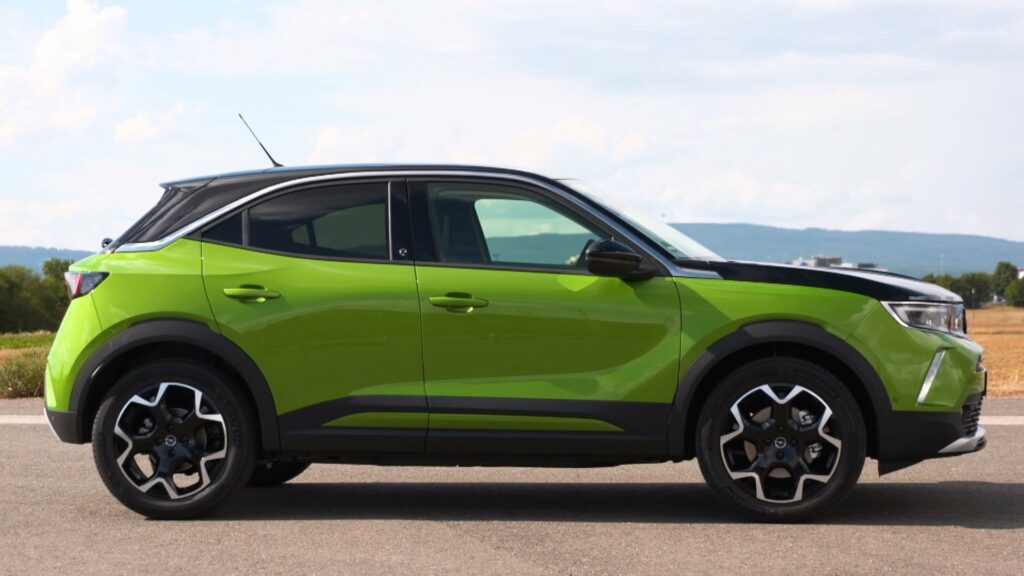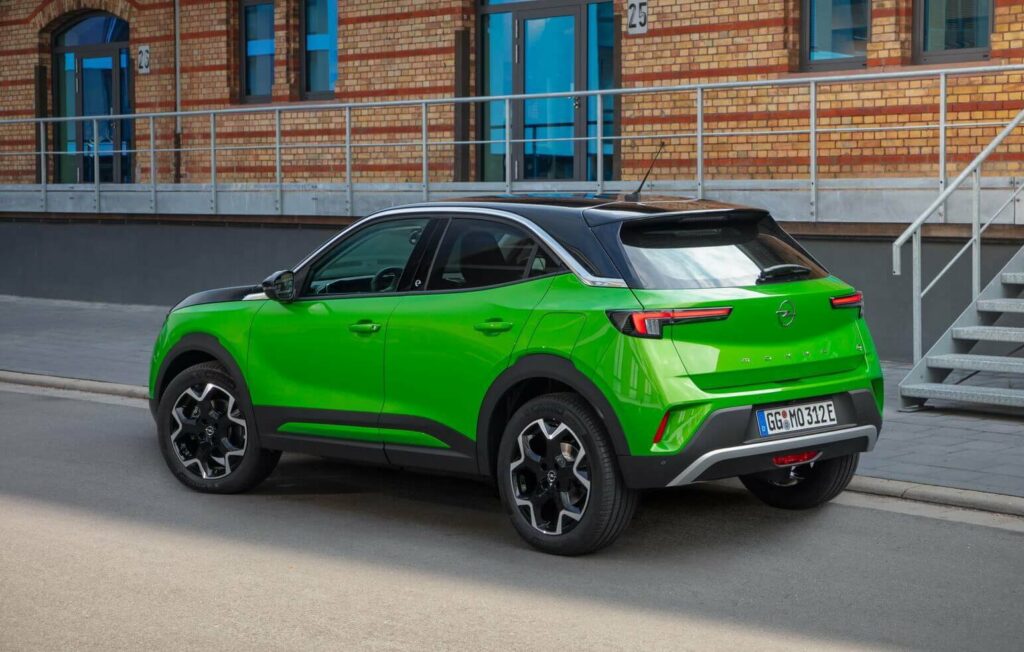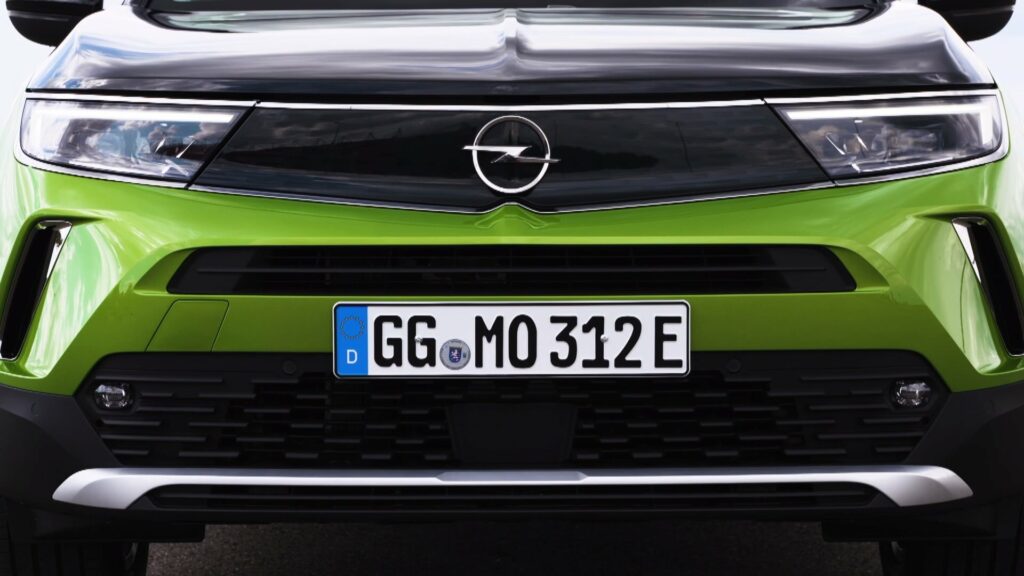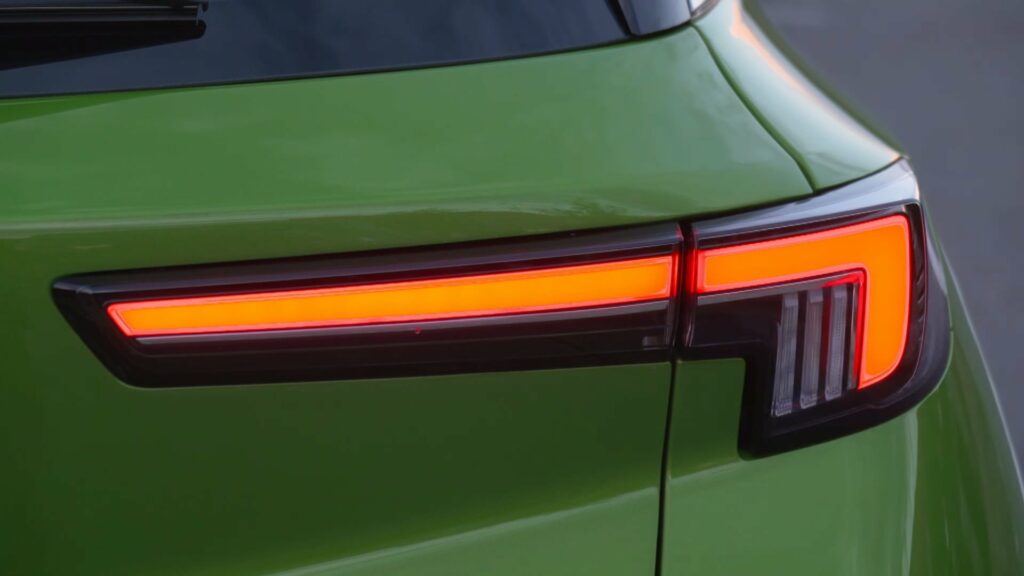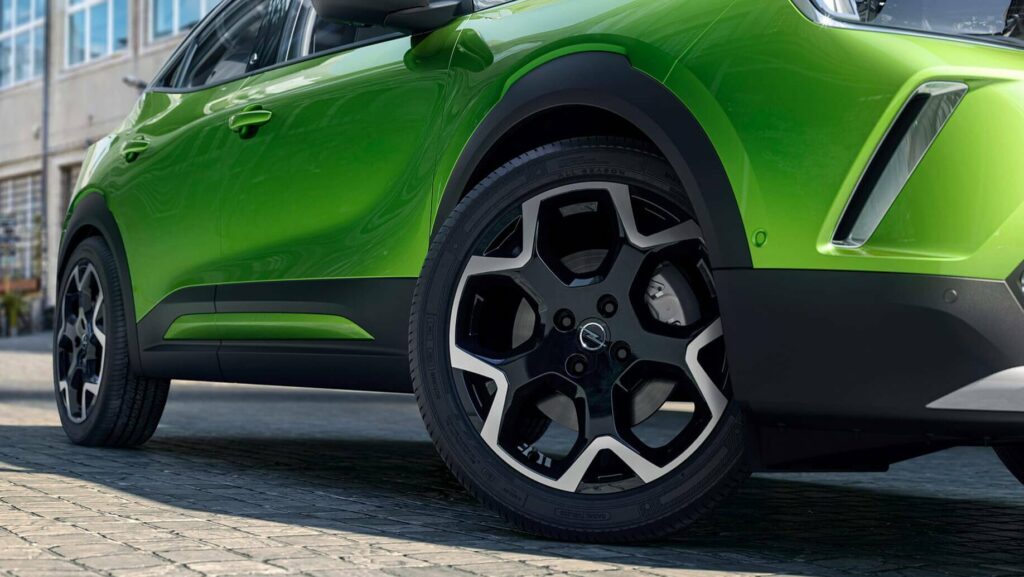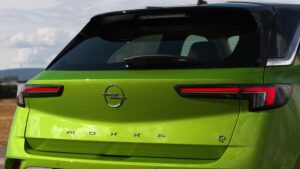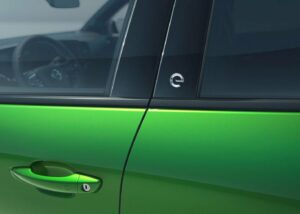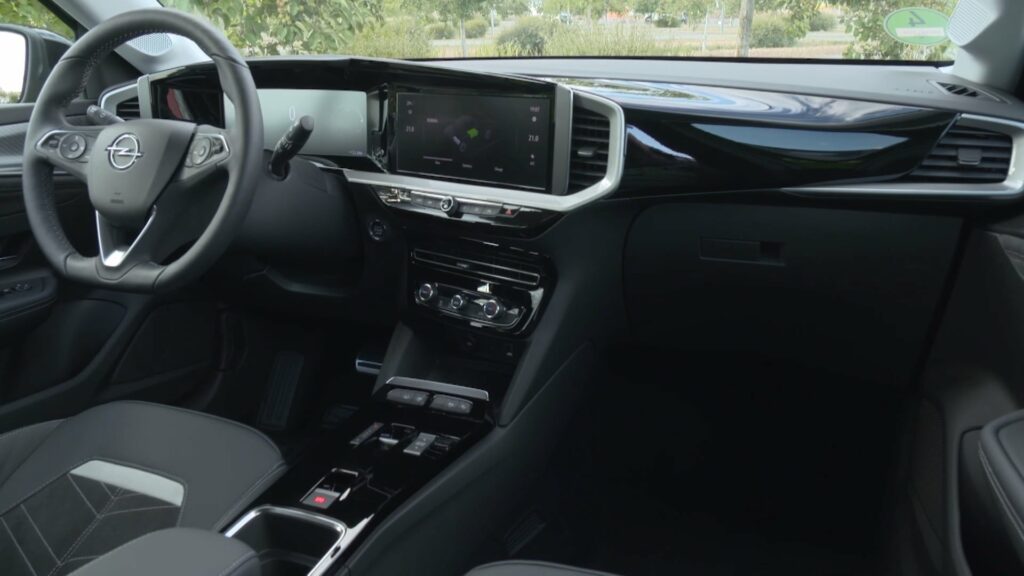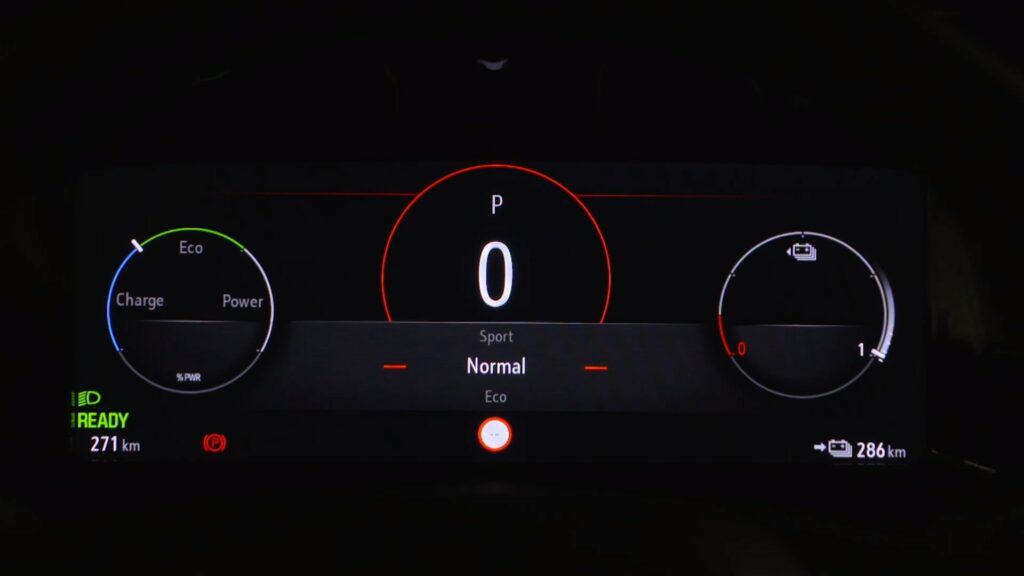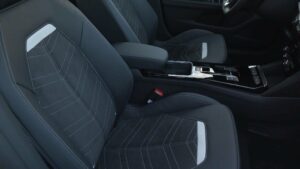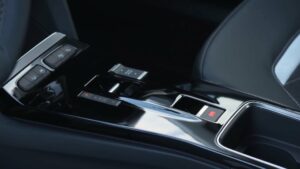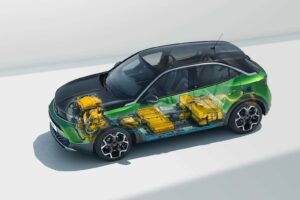Opel Mokka-e
The Opel Mokka-e is an all-electric subcompact SUV produced by the German automobile manufacturer Opel. It was first introduced in 2020 as part of Opel’s strategy to electrify its entire product lineup by 2024.

The Mokka-e is powered by a 50 kWh lithium-ion battery that can provide a range of up to 255 miles (324 km) on a single charge, according to WLTP testing. It has a maximum power output of 100 kW (136 horsepower) and can accelerate from 0 to 62 mph (100 km/h) in 8.5 seconds.
The Mokka-e features regenerative braking, which allows the battery to be recharged while the car is braking or decelerating. It also has three driving modes – Eco, Normal, and Sport – that adjust the car’s power output and throttle response to suit different driving styles.

Inside, the Mokka-e features a modern and minimalist design with a 10-inch touchscreen display that supports Apple CarPlay and Android Auto. It also has a range of safety features, including a lane departure warning, automatic emergency braking, and a 180-degree rearview camera.
Overall, the Opel Mokka-e is a stylish and practical electric SUV with a competitive range and a range of modern features.
| Performance | |
| Acceleration 0 – 100 km/h | 8.5 sec |
| Top Speed | 150 km/h |
| Electric Range | 255 km |
| Total Power | 100 kW (136 PS) |
| Total Torque | 260 Nm |
| Drive | Front |
| Battery and Charging | |
| Battery Capacity | 50.0 kWh |
| Battery Useable | 45.0 kWh |
| Europe | |
| Charge Port | Type 2 |
| Port Location | Left Side – Rear |
| Charge Power | 7.4 kW AC |
| Charge Time (0->255 km) | 7h15m |
| Charge Speed | 36 km/h |
| Fastcharge Port | CCS |
| FC Port Location | Left Side – Rear |
| Fastcharge Power (max) | 99 kW DC |
| Fastcharge Time (26->204 km) | 31 min |
| Fastcharge Speed | 340 km/h |
| Energy Consumption | |
| EVDB Real Range | |
| Range | 255 km |
| Vehicle Consumption | 176 Wh/km |
| CO2 Emissions | 0 g/km |
| Vehicle Fuel Equivalent | 2.0 l/100km |
| WLTP Ratings | |
| Range | 322 km |
| Rated Consumption | No Data |
| Vehicle Consumption | 140 Wh/km |
| CO2 Emissions | 0 g/km |
| Rated Fuel Equivalent | No Data |
| Vehicle Fuel Equivalent | 1.6 l/100km |
|
Rated = official figures as published by manufacturer. Rated consumption and fuel equivalency figures include charging losses.
|
|
|
Vehicle = calculated battery energy consumption used by the vehicle for propulsion and on-board systems.
|
|
| Real Energy Consumption Estimation between 117 – 250 Wh/km | |
| City – Cold Weather * | 176 Wh/km |
| Highway – Cold Weather * | 250 Wh/km |
| Combined – Cold Weather * | 209 Wh/km |
| City – Mild Weather * | 117 Wh/km |
| Highway – Mild Weather * | 196 Wh/km |
| Combined – Mild Weather * | 155 Wh/km |
| Energy use for each trip will vary considerably depending on the driver and the conditions. Therefore, we have provided a range of estimates which can be useful in developing an understanding of the potential benefits of this technology. | |
| Safety Rating | |
| Adult Occupant | 73% |
| Child Occupant | 75% |
| Rating Year | 2021 |
| Vulnerable Road Users | 58% |
| Safety Assist | 64% |
| Dimensions and Weight | |
| Length | 4150 mm |
| Width | 1750 mm |
| Width with mirrors | No Data |
| Height | 1525 mm |
| Wheelbase | 2650 mm |
| Weight Unladen (EU) | 1550 kg |
| Gross Vehicle Weight (GVWR) | No Data |
| Max. Payload | No Data |
| Cargo Volume | No Data |
| Cargo Volume Max | No Data |
| Cargo Volume Frunk | No Data |
| Roof Load | No Data |
| Tow Hitch Possible | No Data |
| Towing Weight Unbraked | No Data |
| Towing Weight Braked | No Data |
| Vertical Load Max | No Data |
| Miscellaneous | |
| Seats | 5 people |
| Isofix | No Data |
| Turning Circle | No Data |
| Platform | PSA eCMP |
| Car Body | SUV |
| Segment | JB – Small |
| Roof Rails | No Data |
| EV Dedicated Platform | No |
Home and Destination Charging (0 -> 100%)
A public charging station is required to use the highest possible charging rate. The EVSE/charging station’s charging capacity affects how long it takes to fully charge the battery. The table below shows all possible options for fully charging the Opel Mokka-e.
In Europe, plugging an electric car into an outlet is often as easy as plugging it into a household outlet, but there are differences from country to country. The table below shows the different ways to charge the Opel Mokka-e, but in some countries some chargers may not be available.
Type 2 ( IEC 62196)

| Charging Point | Max. Power | Power | Time | Rate |
| Standard 7.4 kW On-Board Charger | ||||
| Wall Plug (2.3 kW) | 230V / 1x10A | 2.3 kW | 23h15m | 11 km/h |
| 1-phase 16A (3.7 kW) | 230V / 1x16A | 3.7 kW | 14h30m | 18 km/h |
| 1-phase 32A (7.4 kW) | 230V / 1x32A | 7.4 kW | 7h15m | 35 km/h |
| 3-phase 16A (11 kW) | 230V / 1x16A | 3.7 kW | 14h30m | 18 km/h |
| 3-phase 32A (22 kW) | 230V / 1x32A | 7.4 kW | 7h15m | 35 km/h |
| Optional 11.0kW On-Board Charger | ||||
| Wall Plug (2.3 kW) | 230V / 1x10A | 2.3 kW | 23h15m | 11 km/h |
| 1-phase 16A (3.7 kW) | 230V / 1x16A | 3.7 kW | 14h30m | 18 km/h |
| 1-phase 32A (7.4 kW) | 230V / 1x32A | 7.4 kW | 7h15m | 35 km/h |
| 3-phase 16A (11 kW) | 400V / 3x16A | 11 kW | 5 hours | 51 km/h |
| 3-phase 32A (22 kW) | 400V / 3x16A | 11 kW | 5 hours | 51 km/h |
Fast Charging (10 -> 80%)
If you want to enjoy driving an electric car, one of the most important features to consider is the number of miles per hour the car can travel while charged. This is called the “range” of the car. All electric cars have a certain range, even if they are 100% charged. This is because they do not have an internal combustion engine to lean on if you need to drive a long distance.
Max. Power: The maximum power provided by the charging point
Avg. Power: The average power provided by the charging point during a session of 10% to 80%.
Time: the time it takes to charge from 10% to 80%
Speed: the average charging rate during the session of 10% to 80%
Combined Charging System (CCS Combo 2)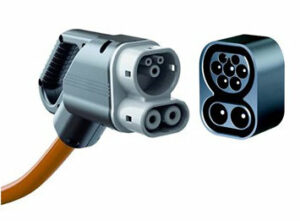
| Charging Point | Max. Power | Avg. Power | Time | Rate |
| CCS (50 kW DC) | 50 kW | 46 kW | 43 min | 240 km/h |
| CCS (175 kW DC) | 99 kW | 65 kW | 31 min | 340 km/h |
| CCS (350 kW DC) | 99 kW | 65 kW | 31 min | 340 km/h |
| Brand | Opel |
| Model | Mokka-e |
| Body Style | SUV |
| Car Engine | electric |
| Motor power | 100 |
| Maximum Torque, Nm | 260 |
| Battery Energy, kWh | 50.0 |
| Power reserve (NEDC/EPA/WLTP), km | - / - / 255 |
| Level Charging (230/400/DC), hours | - / 5.0 / 0.31 |
| Electrical Acceleration, 0-100 km/h (0-62.1 mph) in sec | 8.5 |
| Top Speed, km/h | 150 |



